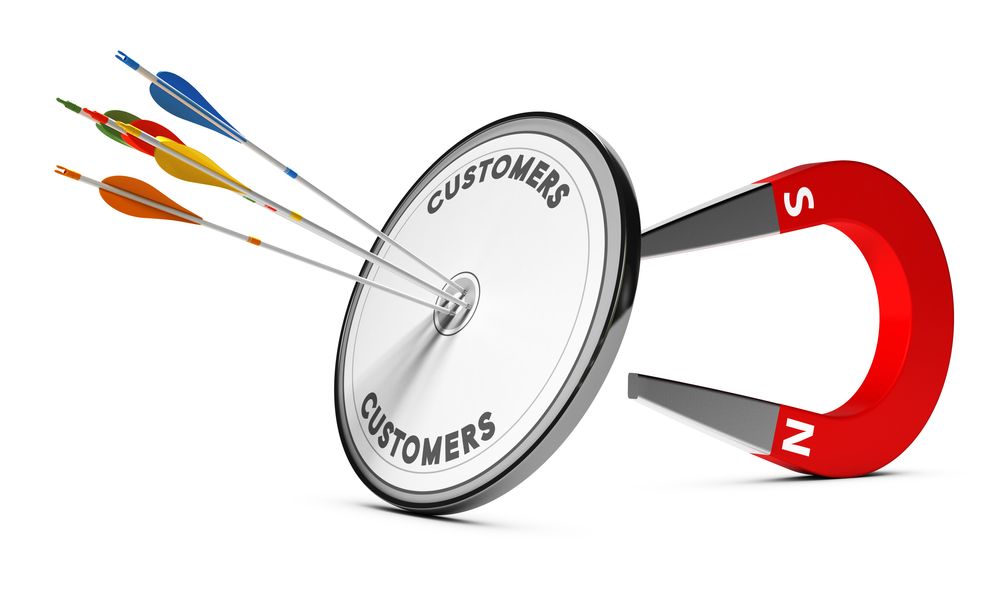If you’re a business owner and have faced the wrath of fluctuating market trends, then you know that diversification is key to building and managing an established business. This corporate strategy can help insulate your business from the ups and downs of any one market, and it can also lead to new business opportunities.
There are numerous ways to approach diversification but the goal is to expand your customer base and reduce your reliance on any one group of clients.
Of course, diversifying your existing customer base isn’t without its risks. When you’re trying to reach a new customer base, there’s always the potential that you’ll lose some of your existing clients in the process. That’s why it’s important to carefully weigh the risks and rewards before making any decisions about diversifying your customer base.
But if you can successfully navigate the challenges of client diversification, it can be a powerful tool for building an established business in the face of changing market trends.
Types of Consumer Diversification
One common way businesses attempt to increase sales is to find new customer groups. This can involve targeting a new geographic market, a new industry, or a new type of customer. Of course, it isn’t always easy. It can be tough to break into a new market, and you may not have the same level of knowledge about new customers.
As a result, it’s important to choose the right strategy for your business. Here are three common approaches to diversification:
1) Adjacency Expansion
This involves targeting customers who are similar to your current customer base. For example, if you sell toys, you might target parents of young children or expectant parents. The idea is that these customers will be familiar with your brand and more likely to buy from you.
2) Market Development
This approach involves targeting an entirely new market. For example, if you sell cosmetics, you might target men as a way to expand your customer base. The goal is to convince people who wouldn’t normally buy your product that they need it.
3) Product Development
This strategy involves creating new products for your existing customer base. For example, if you sell home decor, you might create a new line of products for pet owners. The goal is to convince your current customers that they need a new product.
Choosing the right consumer diversification strategy will depend on your business and your goals. Before you dive in, make sure you have a solid plan in place. Otherwise, you could end up wasting time, resources, and money chasing after the wrong customer groups.
When Is the Best Time To Begin Diversifying Your Customer Base?
There’s no single answer to this question since it can vary depending on your business, your industry, and a variety of other factors. However, in general, the best time to start diversifying your customer base is before you need to.
This may seem counterintuitive – after all, why would you want to spend time and resources developing a customer base that you don’t currently need? However, if you only start diversifying when you’re already struggling to find new customers, it will be much harder to make the transition.
Instead, start thinking about diversification early on and build it into your long-term plans. That way, when the time comes, you’ll already have a solid foundation in place.
How Do You Build a Client Diversification Process?
Again, there’s no one answer to this question – it depends on your business, your products or services, and your customer base. However, there are some general principles you can follow to build a diversification process that’s right for your company.
Define your goal
The first step is to define what you’re trying to achieve with consumer diversification. Are you looking to expand into new markets? Increase sales to existing customers? Develop new product lines? Once you know your goal, you can start to develop a plan to achieve it.
Do you want to benefit from strong customer diversification?
Identify your customers
The next step is to identify your current and potential customers. Who are they? What do they need or want? What motivates them? Answering these questions will help you develop a strategy for reaching them.
Develop a marketing plan
Now that you know who your customers are and what they want, you can develop a marketing plan to reach them. This plan should include tactics like advertising, public relations, events, and digital marketing.
Implement your plan
Once you have a plan in place, it’s time to start implementing it. This will require some effort on your part, but if done correctly, it can pay off in the form of new customers and increased sales.
Evaluate your results
After you’ve been implementing your diversification strategy for a while, it’s important to take a step back and evaluate your results. What’s working? What isn’t? What could be improved? This feedback will help you fine-tune your strategy and ensure that it’s as effective as possible.
Building a diversification process can be a challenge, but it’s well worth the effort. By following these steps, you can develop a plan that’s tailored to your business and your goals. With a little hard work, you can expand your customer base and boost your sales.
Strategies To Diversify Your Customer Base
Businesses need customers to survive. It’s as simple as that. But what happens when your customer base starts to dwindle? You need to find new ways to attract customers and grow your business. This means reaching out to markets and target audiences that you may have previously overlooked. By doing so, you’ll be able to tap into new revenue streams and boost your bottom line.
Here are a few strategies that can help you diversify your consumer base:
Expand your geographical reach and market network
Networking can be a powerful tool for expanding your geographical reach and diversifying your customer base. When done correctly, networking can help you connect with new customers, learn about various markets, and gain a competitive advantage. However, it’s not always easy and takes time and effort to build relationships. The key to successful networking is to be strategic about whom you target and how you approach them.
First, identify the organizations and individuals that are most likely to help you achieve your goals. Then, reach out and introduce yourself in a friendly and professional manner. Finally, follow up regularly and keep the lines of communication open.
Tap into new markets
A new market is a new demographic, geographic area, or sector that your company has not previously tapped into. It could also be a new type of customer, such as business customers, or new segments within your existing customer base.
Entering a new market can be an effective way to diversify your customer base and reduce your reliance on any one particular group. Small businesses rely on referrals from your current customers since they’re often the best way to get new business, but you may also need to actively seek out potential markets through marketing and advertising.
When expanding into different markets, it’s important to have a well-organized plan in place so that you can maximize your chances of success.
Use new marketing channels
Relying solely on one or two marketing channels could mean missing out on potential clients. By expanding your reach and targeting new markets, you can ensure long-term success for your business.
One way to reach new audiences is by using client testimonials. Having happy customers sing your praises is a great way to show potential new clients what you’re all about. If you have a virtual audience, consider using platforms like YouTube or Instagram to showcase client testimonials. Another way to reach new markets is by using targeted ads. Platforms like Facebook and Google offer advertising options that allow you to target specific demographics.
There are many different ways to reach new markets and expand your customer base. By using a variety of marketing channels, you can effectively reach your target market and ensure long-term success for your business.
Offer new products or services
If you’re only offering the same products or services, you’re going to have a hard time attracting new customers. By offering new products and services, you can attract more customers and get a leg up on your competitors. But before you jump into diversification, it’s important to have a solid plan in place. Otherwise, you could end up spreading yourself too thin and jeopardizing the quality of your products and services.
When done right, diversification can help you focus on new areas for growth and leverage your existing strengths to attract more customers. It’s also important to remember that diversification comes with some risks. But if you’re strategic about it, you can minimize those risks and position yourself for long-term success.
By following these strategies, you can diversify your customer base and boost your bottom line. So don’t wait any longer, start implementing these strategies today and watch your business grow!
Diversify your customer base to stabilize and grow your business!
5 Benefits of Investing in a Strong Customer Diversification Strategy
It’s never a good thing if the survival of your business depends heavily on one company or client base. If you were to lose this revenue source for any reason, your very business could land in jeopardy. To diversify your consumer base is to alleviate this risk, add stability, and ensure financial returns. Not to forget the opportunity to work with more people from various business backgrounds on equally varied projects.
Let’s have a look at the benefits that a diversified consumer base has to offer.
1. A more stable customer base
When a business has a diverse customer base, it is less likely to be affected by changes in any one customer’s circumstances. This can lead to greater stability and predictability in revenue.
2. Greater opportunities for growth
A diversified customer base provides a business with more opportunities for growth. New customers can be acquired through targeted marketing efforts, and current customers can be upsold or cross-sold additional products and services.
3. Reduced customer acquisition costs
Consumer diversification can lead to economies of scale in customer acquisition costs. The more customers a business has, the lower the cost per customer acquired.
4. Increased customer lifetime value
A diversified customer base can also lead to increased customer lifetime value. Customers that purchase multiple products or services from a business are typically more loyal and have a longer tenure than those that only purchase one product or service.
5. Greater brand awareness and reach
A business with a diversified customer base can also benefit from greater brand awareness and reach. When customers use multiple products or services from a business, they are more likely to tell others about the company, which can result in increased word-of-mouth marketing.
Final Thoughts on The Benefits of Customer Diversification For a Business
It’s important to have a mix of customers to ensure that your business is stable and can weather any potential downturns. By diversifying your customer base, you’re also increasing your chances of finding new opportunities for growth.
Of course, it’s not always possible or practical to diversify your customer base. But if you can, it’s worth considering. It could be the key to ensuring your business’s long-term success.
Growth Hackers is your one-stop growth agency solution if you’re seeking professional services in digital marketing to grow your business online. Our team of certified professionals will help you navigate any doubts about ventures you might be willing to take regarding consumer diversification or otherwise.
Find us here to get to know more about what we do and contact Growth Hackers today so we can be of service in growing your business with sustainable and scalable results.








